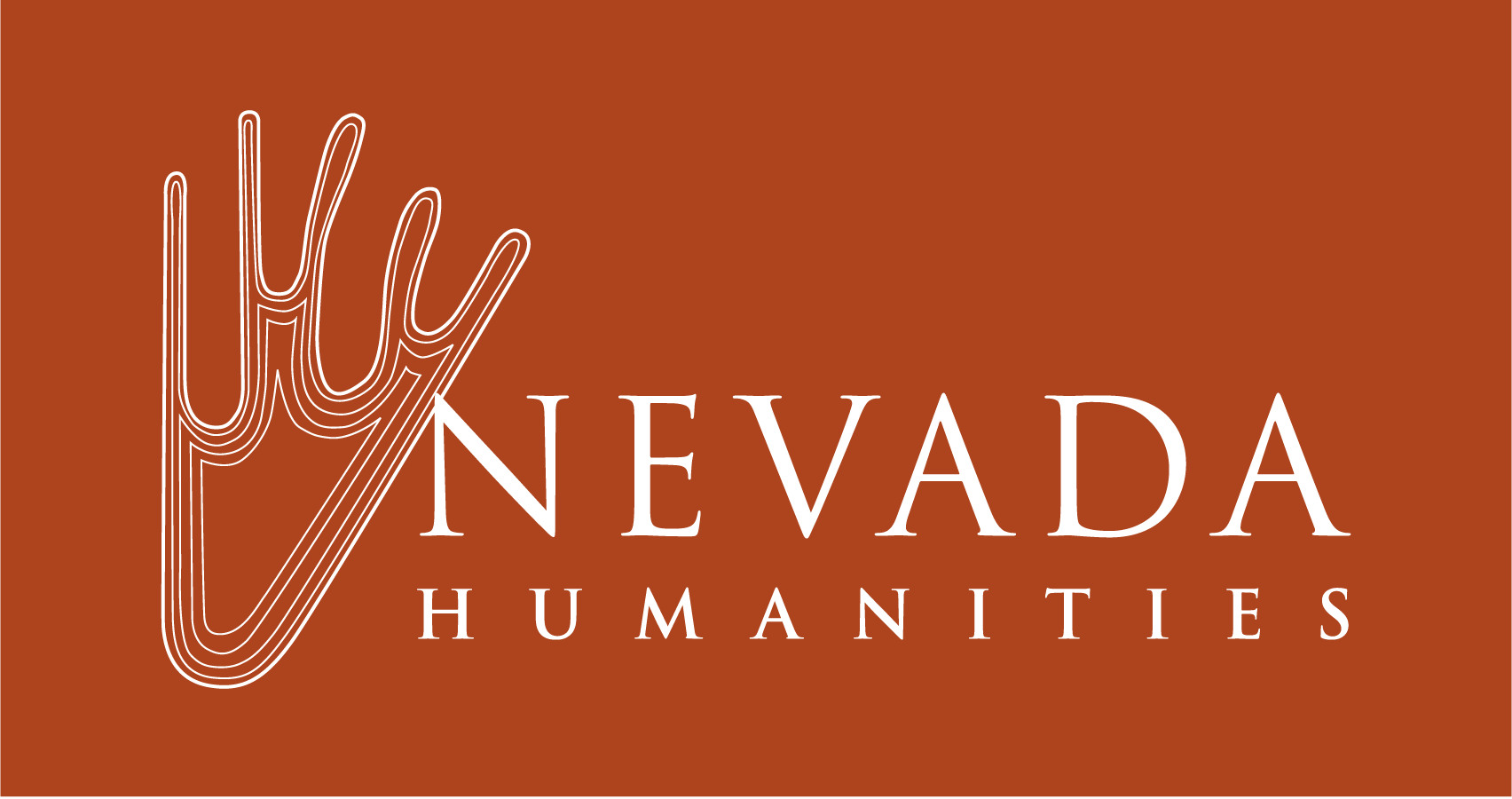At the Heart of Nevada: Community, Collaboration, and the Basin and Range National Monument
This blog post is generously provided in kind by Julian Kilker. The Double Down blog is also supported by Nevada Humanities’ donors.
By Julian Killer
Visitors often wonder if there’s real community beyond the commercial spectacle of the Las Vegas Strip. On the tenth anniversary of the Basin and Range National Monument’s designation, an exhibition shows that there is, and that it’s thriving in surprising ways. At the Heart of Nevada, comprising photography, video documentaries, and interactive installations, brings together a group of people united by their appreciation of the Monument.
Scouting at Mt. Irish: On one of our first trips to Mt. Irish, before Basin and Range was officially designated a National Monument, Checko Salgado and I experimented with nighttime lighting to bring out the textures of rock art. Those experiments led to a series of return visits after dark, when we could use lighting to reveal otherwise hidden details. (Photo by Julian Kilker.)
Located just a few hours north of Las Vegas, the Monument covers more than 700,000 acres (about 1,100 square miles) of rugged mountains and valleys in Lincoln and Nye counties. It’s not an easy place to reach: the rough roads, sandy washes, and little to no cell coverage make for challenging travel. Yet its beauty, history, and sense of vastness, and its resources continue to draw visitors.
Located just a few hours north of Las Vegas, the Monument covers more than 700,000 acres (about 1,100 square miles) of rugged mountains and valleys in Lincoln and Nye counties. It’s not an easy place to reach: the rough roads, sandy washes, and little to no cell coverage make for challenging travel. Yet its beauty, history, and sense of vastness, and its resources continue to draw visitors.
The Monument itself was created through a remarkable collaboration of ranchers, scientists, conservationists, artists, volunteers, and government partners, all working together. Our goal was to protect the region while emphasizing different perspectives on its value: ecological, cultural, historic, and recreational.
At the Heart of Nevada reflects that same collaborative spirit. Curated by three longtime friends who originally met at University of Nevada, Las Vegas—Paula Jacoby-Garrett, Checko Salgado, and myself, who together comprise the nonprofit Friends of Basin and Range National Monument—the exhibition pulls together many voices and perspectives. The works on display explore geology and history, ranching and recreation, artistic interpretation, and the echoes of nearby atomic testing. These pieces don’t just capture the landscape—they also reflect the friendships, idea-sharing, and creative energy that have shaped our engagement with the Monument.
“The Monument itself was created through a remarkable collaboration of ranchers, scientists, conservationists, artists, volunteers, and government partners, all working together.”
At its heart, the exhibition invites visitors to think about how communities form around shared places and ideas. Just as the Monument itself grew out of collective imagination and effort, the exhibition stands as a testament to what collaboration can create. By sharing stories of exploration, stewardship, and creativity, it shows how this remote region continues to spark connections—between people, between disciplines, and between past and present.
We hope this exhibition not only celebrates the Monument’s first decade but also inspires new collaborations for its future. And maybe it will encourage you and your own circles of friends to get out, explore, and help care for this extraordinary corner of Nevada.
Capturing Perspectives: During a sheep herding scene, Paula documented the action from above while honing her skills in visual drone storytelling. At the same time, Checko (upper left) captured close-up images of sheep loading, while Julian (upper center) recorded 360-degree video near the corral. These varied techniques and perspectives are combined in the exhibition’s documentary clip, The Last Shepherd. (Still image from footage by Paula Jacoby-Garrett.)
Nature journaling: A page from Teresa Skye’s field journal reveals her blend of drawing, data, and personal observation. Her artist’s notebook acts as both research and reflection, offering a creative record of the Monument’s landscape and its living details. (Drawings by Teresa Skye.)
Julian Kilker’s work focuses on the intersection of visual media, social issues and innovation, and teaches in the UNLV School of Journalism and Media Studies. His research has been published in academic journals, including Visual Communication Quarterly, the scholarly arts journal Leonardo, Social Identities, Convergence, IEEE journals, and The Public Historian, and he has exhibited solo photography exhibits in Switzerland, California, and Nevada with support by the Nevada Arts Council, the National Park Service, Swatch, and the National Endowment for the Humanities. His work has received awards from The Broadcast Education Association, Management Communication Quarterly, the Association for Educators in Journalism and Mass Communication, the Nevada Press Association, and KNPR’s Desert Companion.

